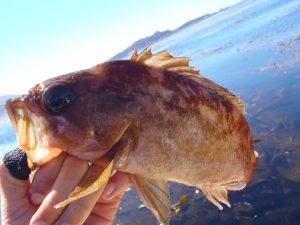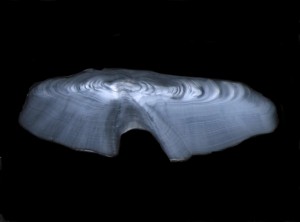Goal: to combine fisheries and dendrochronology methods to quantify the influence of climate on fisheries in a way that furthers adaptive fisheries management in the face of a changing ocean

Climate-growth relationships for rockfish in the genus Sebastes
Climate is a major driver of species productivity, community structure and ecosystem functioning in the nearshore marine environment. However, as we gain a clearer understanding of oceanographic shifts that will occur as our climate changes, the lack of information on species’ biological responses to climate variability becomes apparent. This work relies on growth information stored in the otoliths of nearshore rockfish to improve our understanding of how environmental drivers impact individual fish growth. Results can inform managers working to forecast fishery dynamics to ensure sustainable management of our California nearshore stocks.
This work is not published, because it turned out that the method was not well-suited to temperate rockfish in central California, but that doesn’t mean that we didn’t learn anything! Please contact me for data and results.

Impacts of decadal-scale climate variability on an economically important fishery
The productivity and functioning of marine ecosystems are tightly coupled to climatic variability, To explore the impact of decadal regime shifts (such as the Pacific Decadal Oscillation) on higher trophic levels, we applied dendrochronology (tree-ring science) techniques to the otolith growth-increment widths of Pacific ocean perch (Sebastes alutus) collected from the continental slope of the eastern Bering Sea. Our results show that S. alutus exhibits the highest observed growth values immediately followed regime shifts, suggesting that these event have a critical and lasting impact on fish stocks. The biochronologies that we generated for this project provide a long-term perspective and underscore the susceptibility of fish growth to extreme low-frequency climatic events. This work was led by Dr. Bryan Black with support from the North American Dendroecological Fieldweek.
Find our published results in the journal Climate Research here.